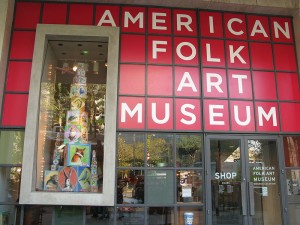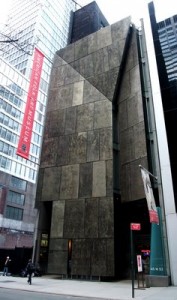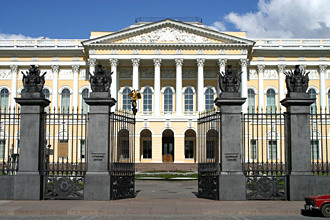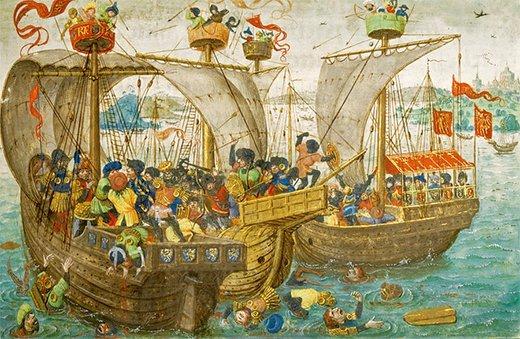 The Wall Street Journal has a short story today suggesting why the American Folk Art Museum (now, at left) should be glad 2012 is over. In addition to having to sell its showcase building (at right, below) — erected at a time of hubris — move back into its smaller space, and take other remedial measures over the last two years, the museum apparently agreed yesterday to forfeit some 210 objects it had been promised by longtime benefactor Ralph Esmerian, “the former jewelry dealer who last year was sentenced to a six-year prison term on wire fraud and other charges.”
The Wall Street Journal has a short story today suggesting why the American Folk Art Museum (now, at left) should be glad 2012 is over. In addition to having to sell its showcase building (at right, below) — erected at a time of hubris — move back into its smaller space, and take other remedial measures over the last two years, the museum apparently agreed yesterday to forfeit some 210 objects it had been promised by longtime benefactor Ralph Esmerian, “the former jewelry dealer who last year was sentenced to a six-year prison term on wire fraud and other charges.”
The works, not yet in the museum’s legal possession (though some seem to have been on view), would be lost as part of a deal to settle bankruptcy claims. The WSJ says that “the trustee for the case and the museum negotiated a settlement in which the museum would keep 53 of the 263 promised gifts. On Wednesday, the trustee filed a motion in U.S. Bankruptcy Court for the Southern District of New York to approve the settlement. A call to the trustee was not returned.”
The museum’s website does not yet have the announcement of this deal posted.
 But the WSJ says that museum officials chose the 53 items they were able to keep, with the rest likely going up for sale at auction.
But the WSJ says that museum officials chose the 53 items they were able to keep, with the rest likely going up for sale at auction.
“These 53 were the most important to the museum because they would enhance the collection,” said Ms. [Barbara] Livenstein, [the spokeswoman]. “We were eager to arrive at this compromise and get it behind us.”
If the settlement is approved, the museum will be able to keep items like the 1848 painting “Situation of America,” which is currently on view in the museum’s exhibition at the South Street Seaport Museum. High-quality examples of folk art genres such as needlework, fraktur (handwritten manuscripts) and scrimshaw, as well as portraits and sculptures, will also be retained.
Earlier this month, the museum’s new director, Anne-Imelda Radice, posted a Letter from the Director that also focused on the future and highlight’s the museum’s traveling exhibitions and influences on the Venice Biennale and other activities.
Radice seems to have, at least, stablized the museum. But it still has a long way to go before becoming vibrant again. Let’s hope 2013 begins a real turnaround.





